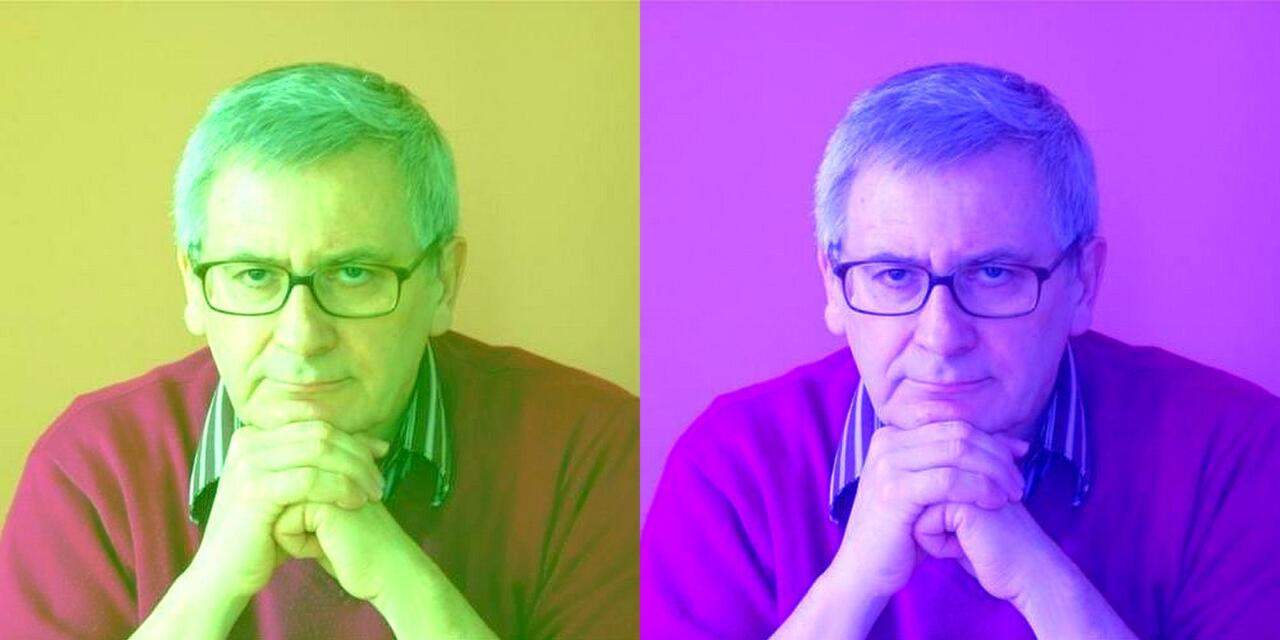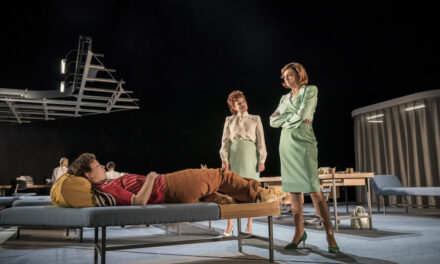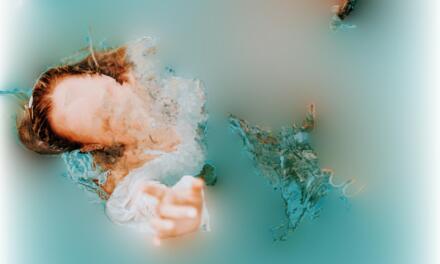There is always a cultural gap between scholars and artists, each group being suspicious of the other.
Patrice Pavis (1947, France) is an internationally renowned theater scholar. He was a Professor of Theatre Studies at the University of Kent in Canterbury (UK), where he retired at the end of the academic year 2015/16. He has written extensively about performance, focusing his study and research mainly on semiology and interculturalism in theatre. He was awarded the Georges Jamati Prize in 1986. In 1987, Pavis suggested a new theory regarding the translation of dramatic works – the idea of ‘verbo-corps’. He is the author and editor of many significant books and readers: The Routledge Dictionary of Contemporary Theatre and Performance; Theater Dictionary; Languages of the Stage; Analyzing Performance (theater, dance, and film); The Intercultural Performance Reader (Ed.); Theatre at the Crossroads of Culture; Slovak Theatre; Performing Korea, Palgrave, 2017; Poème toi-même, 2021 (Novel) …
Ivanka Apostolova Baskar: Mr. Pavis, once self-censorship has penetrated deep into art and theatre, what is the meaning of creating art and theatre, and what is its perspective(s) for further survival in the domestic and international contexts?
Patrice Pavis: As soon as self-censorship penetrates the mind of a theatre artist, the result and the aim of creating art and theatre can only be a matter of making a living through art, of surviving by all means, and thus of giving up any critical view, as if another voice were speaking through him/her. It obviously also depends on what has been self-censored: is it only a minor concession to the law, or is it what constitutes the speaking subject? There is always some censorship in our way of thinking and speaking out, in order not to hurt other people’s feelings, and thus not to be ourselves “canceled out”.
IAB: From the time of Patrice Pavis’s rarely and strongly inspiring, and totally relevant Dictionary of Theatre, to the current state of mind in the art under the cancel culture threat, how do you witness the evolution of theatre in the world?
PP: I am not sure I understand the question. But let me try to answer it anyway. What is the “evolution of theatre in the world?”? It seems difficult to speak and answer in such general terms. There is a contradictory evolution of the theatre: 1) One stick to the principle of theatre as a real, physical, presential encounter between an actor and a spectator, while a story is told or an action performed. Or/and: 2) Theatre uses more and more audio-visual recordings by all sorts of media, Zoom, Skype, etc.
IAB: Cultural policy in Europe, four years ago announced the internationalization of theater and culture, but from the year 2020 onwards, we are witnessing global closures and isolation caused by the COVID pandemic and the war in Ukraine, as a follow-up. Are digital communication tools, are an alternative to the internationalization of theater? Or what is your opinion on the use of VR, AI … as new approaches in the contemporary performance theatre in Europe?
PP: I don’t think digital communication tools are an alternative to the theatre, be it local or international theatre. It might be a means to give an idea (through media or the internet) of what theatre is (or was, or could be). However, if “theatre”, in the old sense of the term, is using digital means of communication within a live performance, it could re-enforce the scope and strength of theatre.
IAB: Cultural policy in Europe, according to the green agenda, imposes self-sustainability on/in the theater, green dramaturgy, dramatic themes like – climate change, environmental crisis, radical austerity, additional self-denial, and circular economy which is manifested by the promotion of the theater`s analog archives and digital archives, with intensive training in the domain of Wiki Data open-source, online archiving. Is this a way of re-examining many contemporary values and achievements in the European theater, but also all the street performance forms, traveling theatre forms, and on-the-road theatre formats, from the history of the theater, are being re-actualized, too? What is your opinion?
PP: The promotion of the theatre’s analog and digital archives is certainly helping the theatre. It is particularly useful for scholars and students, historians of the theatre, who all need to compare forms and experiences from the past. I am not sure however that artist of today will use the possibility of consulting archives before they start their artistic work. And in many countries, there is no “Dramaturg” (literary adviser) to assist the director and the whole creative team, by drawing on past experiences in the theatre. There is always a cultural gap between scholars and artists, each group being suspicious of the other.
IAB: What do you think about the contemporary political theater, today – can political theater really change anything in current domestic and global politics, existence, and life; or is it a theatre approach that ensures more successful world fame for its creators?
PP: I am not sure that political theatre can change the situation in domestic and global political life. But it can help different groups (young people, students, minorities) to challenge their thinking, test and criticize “received” ideas or beliefs, and change or at least question their ideas about the world, rather than their political creed. I don’t think that a political theatre is an approach that will bring artists world fame!
IAB: Mr. Pavis, today the world of politics, theater, and art in general, favors the ethnic and gender cultures of minorities, whether the way it is done is demagogic and causes a counter effect of allegedly improving the situation for the Others?; when on the other hand discrimination, poverty, and neo-fascism with racism, are in continuity on the rise, in the Euro-Atlantic area? What is the new crisis in theatre today?
PP: It seems that the different “ethnic and gender cultures of minorities” can both feel under-represented on the stage and demagogically treated, which can entail a counter-effect of dissatisfaction. And generally, spectators do not like at least in the still democratic Western world, to be taught moral lessons or politics as school children or members of a church. You are right to note that discrimination, racism, poverty, fascism—and I would add: populism– are on the rise in the whole world. Climate change, wars, the aggressive ultra-liberal economy will definitely worsen the current situation of all performing arts.
Artistic discourse on minorities is a delicate matter, often misunderstood, and even rejected by minorities themselves. Even the mask of fiction or the best intentions in the world will not prevent misunderstandings and sometimes rejection or boycott of the performance.
IAB: Postmodern theater generates post-dramatic theater and performance, in some of the contemporary linear documentary-theater performances, I recognize a lack of ideas regarding mise-en-scène and dilemmas in the director`s concept of the meaning of creating a contemporary theater; I wonder if this kind of crisis is in the director and in the counter-effect of the fashion/trend to be a director in theatre, or the problem starts in the drama education, in the drama schooling?
PP: This crisis of mise en scène (in post-dramatic, documentary, site-specific, interactive, or immersive theatre) is not only and solely due to a lack of ideas (on the part of the director and his/her team). Sometimes there are too many ideas, contradictory ideas, or too obvious theses. The crisis is often also due to the increasing difficulties of people to accept another person’s point of view or question one’s position. I am not sure the problem is connected to “drama in education” and that the highly sophisticated notion of “director” can already be introduced at an early age, without disturbing and blocking beginners, young and old!
IAB: Mr. Pavis, you also say: “New dramatic writing has banished conversational dialogue from the stage as a relic of dramaturgy based on conflict and exchange: any story, intrigue or plot that is too neatly tied up is suspect.” – Whether this post-structuralist syndrome and philosophical complex in playwrights, who do not have the power of the stars of deconstructivism in philosophy (the 60s, 70s, 80s), indicate the problem of how to keep the audience’s attention without flirting or relying on conditional interactivity with the audience, at all costs?
PP: It is (and was always) difficult to generalize about dialogue in today’s theatre writing. “Conversational dialogue“ (or “Konversationsstück”) is nowadays often limited to “boulevard theatre” or “psychological drama“. However, new forms of discourse have emerged such as long monologues, dialogues without indication of the speaker, chorus, and novelistic writing have appeared and they often coexist in the same piece. Not to mention the fact that there is always a dialogue between a spoken or recorded text and a visual-auditory element of the performance.
Interaction with the spectator and the performance always takes place, as soon as a physical action happens on the stage (physically, emotionally, by kinesthetic empathy). Immersive theatre is trying to involve each individual spectator in a situation or in a story which could give them the illusion to be part of the performance and script. However, it is forbidden to talk, touch, and tear down the furniture. Like in the old-time theatre – unfortunately!
IAB: What is your vision for the art of theater or the survival of theater in Europe after 10 or 50 years, whether it will exist and in what forms and formats it will manifest, or where does this mass need for the collective creation of text, direction and acting in theater and performance lead?
PP:
Survival of theatre in Europe in 10 years: my predictions about the theatre of the future:
- It will be even more auto-fictional than today.
- More and more limited by self-censorship, because of different pressure groups.
- A specific type of theatre for each specific identity group (according to racial, ethnic, cultural, religious, political, etc. background).
- No more “popular theatre”, no more people in the theatre.
- “Stand-up”- isation of acting style and content: anecdotes addressed to specific, identity-centered groups.
- Ode to diversity, practice of homogeneity.
- Drifting towards a culture “online”, a theatre recorded and transmitted on the Internet.
- Audience will be no longer ready to pay money for a “performance “ on-demand, even for a modest fee, or for a TV subscription fee.
- No more independent spectators or readers, only “algorithm workers”, establishing the number of pages read or the occurrences of spectators laughing, when, and why.
- Theatre is everywhere as “quoted” on the Internet or on social media, but rare in real life.
- In theory, access to culture and theatre for all; in practice, the theatre is only available for the “happy few”, happily connected.
- Standardization of thinking, of taste, of the reception of the work of “art (ifice)”
- Google-isation: a standardized knowledge of theatre.
- Netflix: fixed choice of theatre consumers on the Net.
- Face(booking) of actors’ faces, performance styles, and spectators facing the same uniform theatrical production.
- No more clear difference between mise en scène and performance, between “mise en perf” and “performise”.
- Choice between standardized but free performance on the Net and expansive theatre performance live, with a delicate mise en scène.
- Presence of live theatre: a luxury for the happy few; over-presence of pop culture for all, but for free.
- Top festivals: more and more for older people with a good memory (of the hey-days of cultural life and theatre of the 60s, 70s, 80s).
- Debate on art and culture? Yes, but mainly among artists and intellectuals.
- Subsidizing of theatre: less and less, but more and more controlled by local institutions and politicians.
In 50 years: predictions:
- Will we be still around?
- And what about theatre?
- Theatre’s possible suicide: selling itself to platforms and transforming its genuine, presential, spectators into consumers and customers.
This post was written by the author in their personal capacity.The opinions expressed in this article are the author’s own and do not reflect the view of The Theatre Times, their staff or collaborators.
This post was written by Ivanka Apostolova Baskar.
The views expressed here belong to the author and do not necessarily reflect our views and opinions.


















